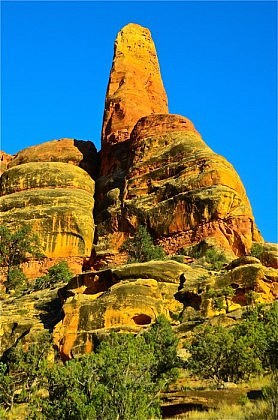OK, now you know: give any large animal plenty of space. But what about the smaller critters? Well, the same rules apply, if for no other reason than when it comes to native wildlife, while backpacking in Yellowstone you are the visitor and the wildlife is at home. Simple courtesy dictates that our goal should always be to minimize disturbance.
Speaking of smaller creatures, there are rattlesnakes in Yellowstone. However, due to the cold climate in most of the park — and indeed most of the Greater Yellowstone Ecosystem (GYE)– rattlesnakes are absent from most areas. In Yellowstone, the only habitat that supports this fascinating venomous creature is the lower portion of the Black Canyon of the Yellowstone River, along the northern border of the park near the town of Gardiner. That area is the lowest elevation with the warmest and driest climate in Yellowstone, the only area of the park that can support these reptiles. The local species is the prairie rattlesnake, and it is the only venomous snake in the Greater Yellowstone. It occurs at the lower elevations around the fringes of the ecosystem, mostly east of the Continental Divide. When in rattlesnake country, keep your eyes and ears open, avoid dense brush, and don’t put your hands on rocks where you can’t see what might be curled up in the sun, just out of sight!
Other venomous creatures that are abundant in the warmer climate of the American Southwest — such as scorpions, centipedes and black widow spiders — are generally absent in the Greater Yellowstone Ecosystem, with the exception of black widows. These dangerous spiders are now established at the lower elevations mostly around the ecosystem fringes, but probably not in the park. Old timers say that their appearance is a recent development, because the colder climate of “the old days” kept these spiders out of the region. As climates continue to warm, poisonous creatures will continue to expand their ranges upward in elevation and northward.
There you have it. For now. Again, living safely with wildlife while backpacking in Yellowstone is mostly a matter of being alert, giving animals space, and using your brain. Really, it’s mostly common sense. Enjoy!



